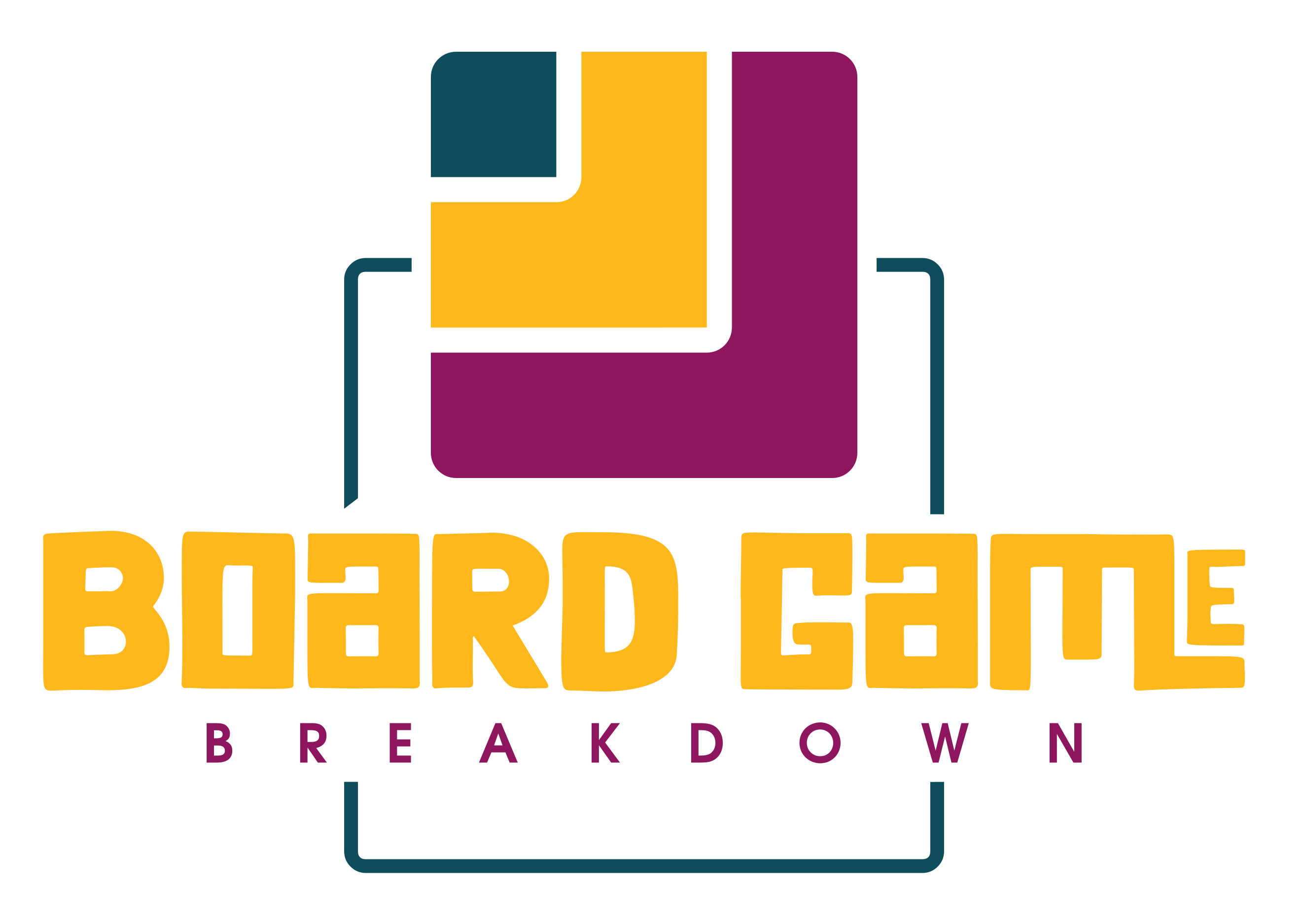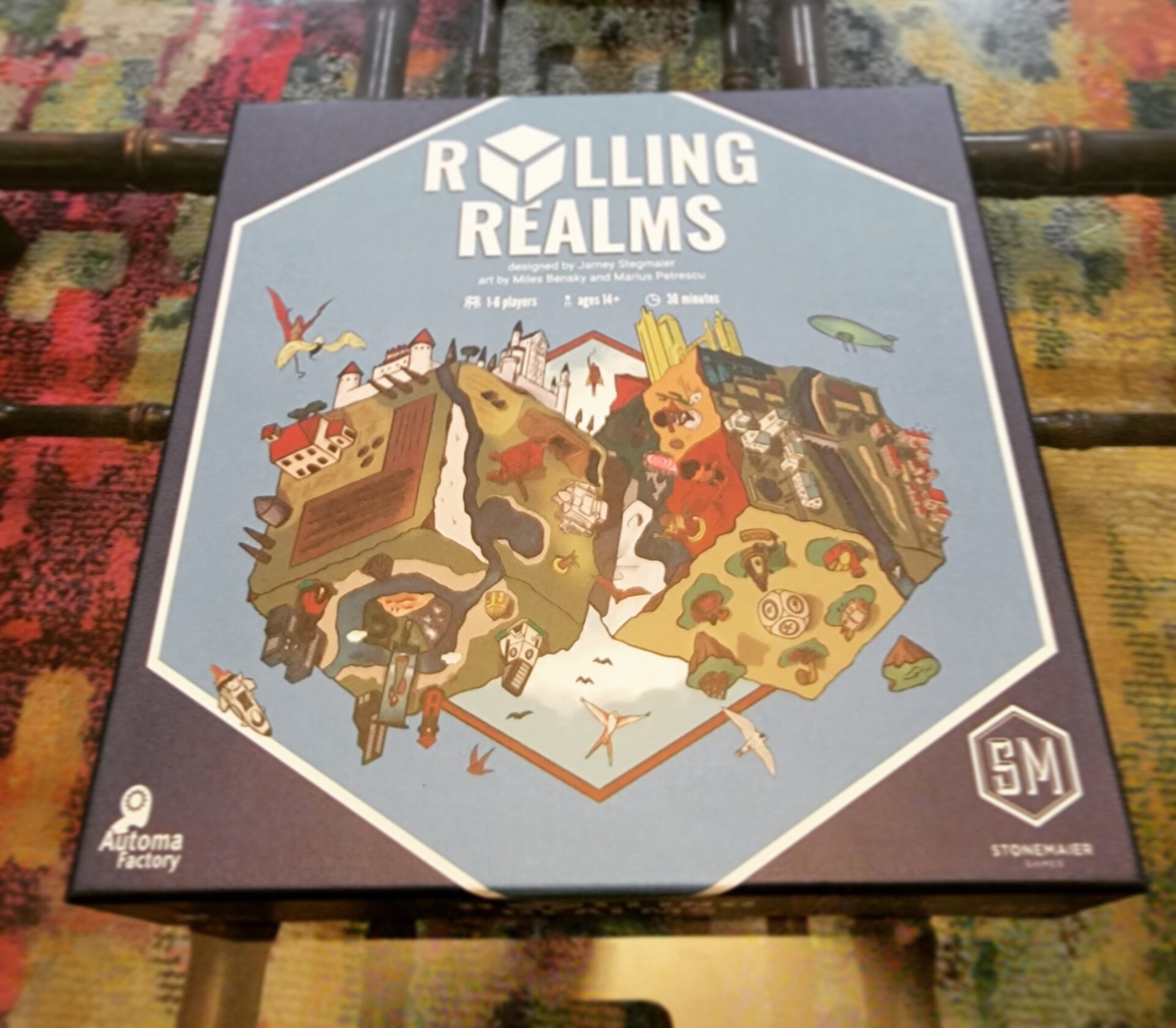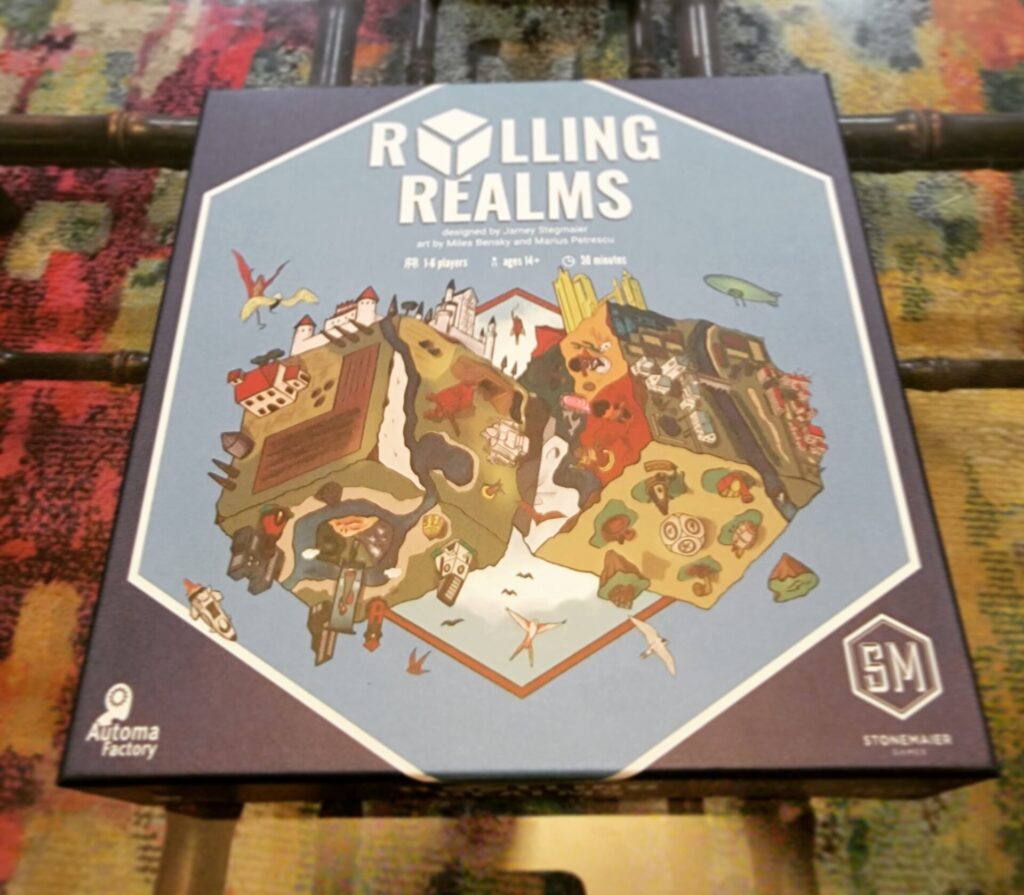
Name: Rolling Realms
Year of Release: 2021
Player Count: 1 – 6 Players
Playing Time: 30 minutes
Designer: Jamey Stegmaier
Publisher: Stonemaier Games
Primary Mechanisms: Dice Rolling, Paper-and-Pencil, Roll-and-Write, Simultaneous Action Selection
Weight (According to boardgamegeek.com): 1.92
Overview
Games predicated on dice rolling are just not my thing. I would not go as far as to say, I refuse to play a game with even a minimal number of dice rolling, but I would never typically purchase one of these games for my own collection. I’ve also not been totally sold on the multitude of “pencil-and-paper” or “roll-and-write” games that have been flooding the market recently. I do not even know what about this genre does not appeal to me, but none of the offerings have ever stuck for me.
On the flip side, one thing that I very much like is Stonemaier Games. No, I haven’t played all their games (such as Red Rising or Pendulum) but the majority that I have played, either find themselves as some of my favorites of all time (Scythe, Viticulture, and Wingspan) or at the very least, games that I always have a good time playing (namely Tapestry and Libertalia: Winds of Galecrest.)
So, when I eventually read about Rolling Realms, I was faced with a conundrum. How are the two sides of this tug-of-war going to play out? I held out, mostly because I just had other games that I prioritized, but when Stonemaier celebrated their 10-year anniversary recently, and put everything physical in their store on sale, I thought that it might be a good chance to pick up Rolling Realms. Does it further cement my prejudices against roll-and-write games, or does it stand out, as so many other Stonemaier Games have done in the past? Read on to find out!
Gameplay
Typically, in my writings, I like discussing the intricacies of the rulebook; the frustration (or lack thereof) found during set up; the detail of each component down to the nth degree. For Rolling Realms, I will discard of this format as there is almost no set up to speak of and components are (mostly) limited to two dice, some laminated cards, and six dry erase markers. Jamey Stegmaier originally conceived of this project as a print-and-play that people could easily play over Facebook Live, Zoom, etc. so it makes sense that the components aren’t the highlight.
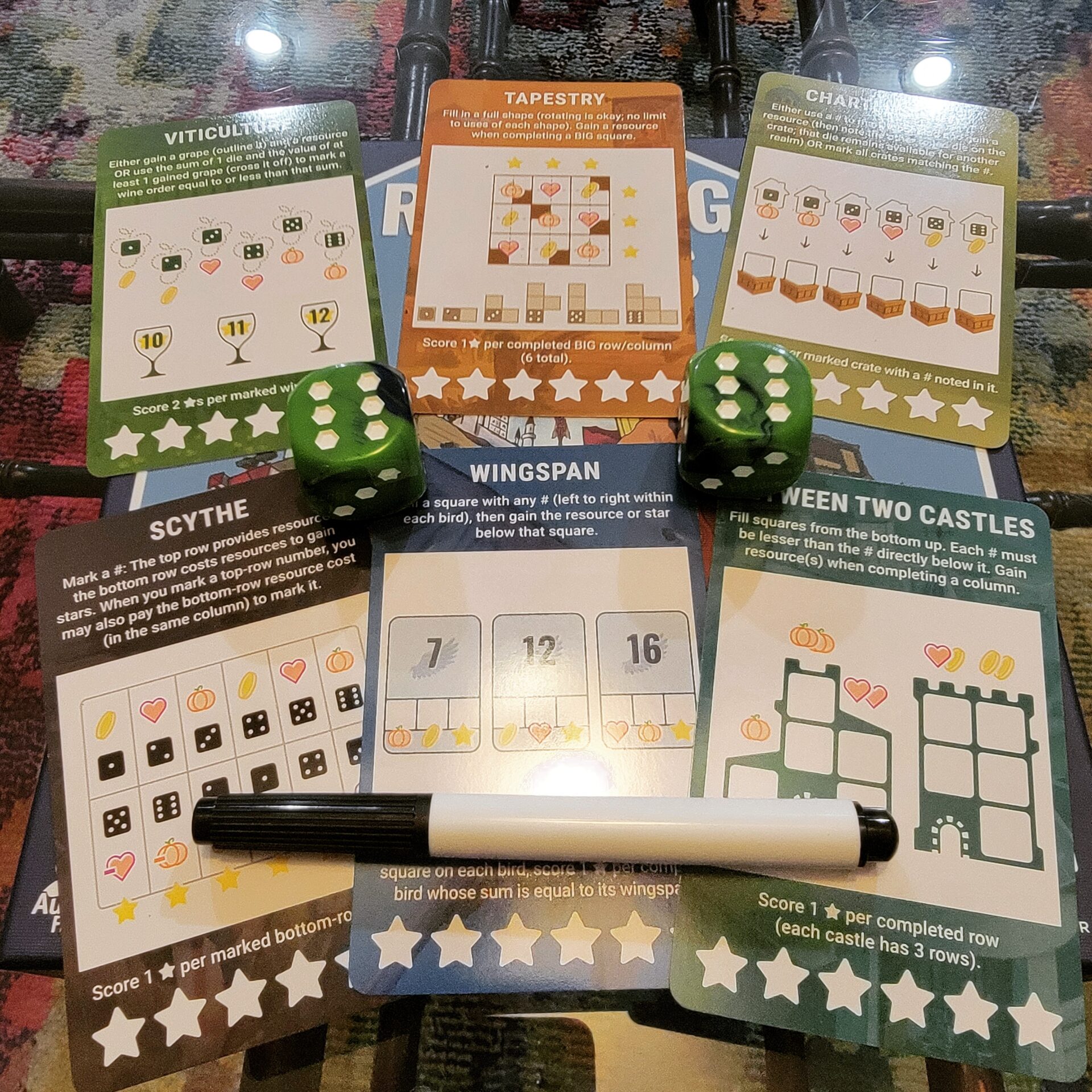
The gist of the game is that three cards (or realms) are drawn from a deck of eleven and all players use these same three cards. The two dice are rolled, and those numbers rolled are used by all players with a few caveats. The main caveat is that a player cannot use both dice in the same realm in one turn. The other caveats are laid out on each card as every realm plays differently. Players can gain three different resources during play (pumpkins, hearts, and coins) to aid them in traversing the realms. These resources act differently but mostly allow players to alter the numbers rolled or to create a third die for that round. The round lasts for nine dice rolls, then all stars (the victory points of Rolling Realms) are tallied up and jotted down in the score tracker. Three more cards are drawn, and the second round begins. This is done until three rounds are completed and the player with the highest total points wins the game.
So, what is the highlight of the game? For me, it is in how each realm captures a feeling (albeit small) of the game it is representing. My favorite example is the Scythe card where players use one die to cross out a number on the top row to gain a resource and then, if able, they can cross out the number in the bottom row and pay the specific resource to gain a star. Alternatively, a player could skip the top row and use a die on the bottom row, pay the resource, and then gain the star. I love how this mimics the way the top and bottom rows work in a normal game of Scythe. Another example is the Tapestry card that allows players to use die to fit shapes into a grid system, with the goal of filling in rows or columns to gain stars. This perfectly replicates the mechanic in Tapestry where you fit your landmarks and buildings into your capital city.
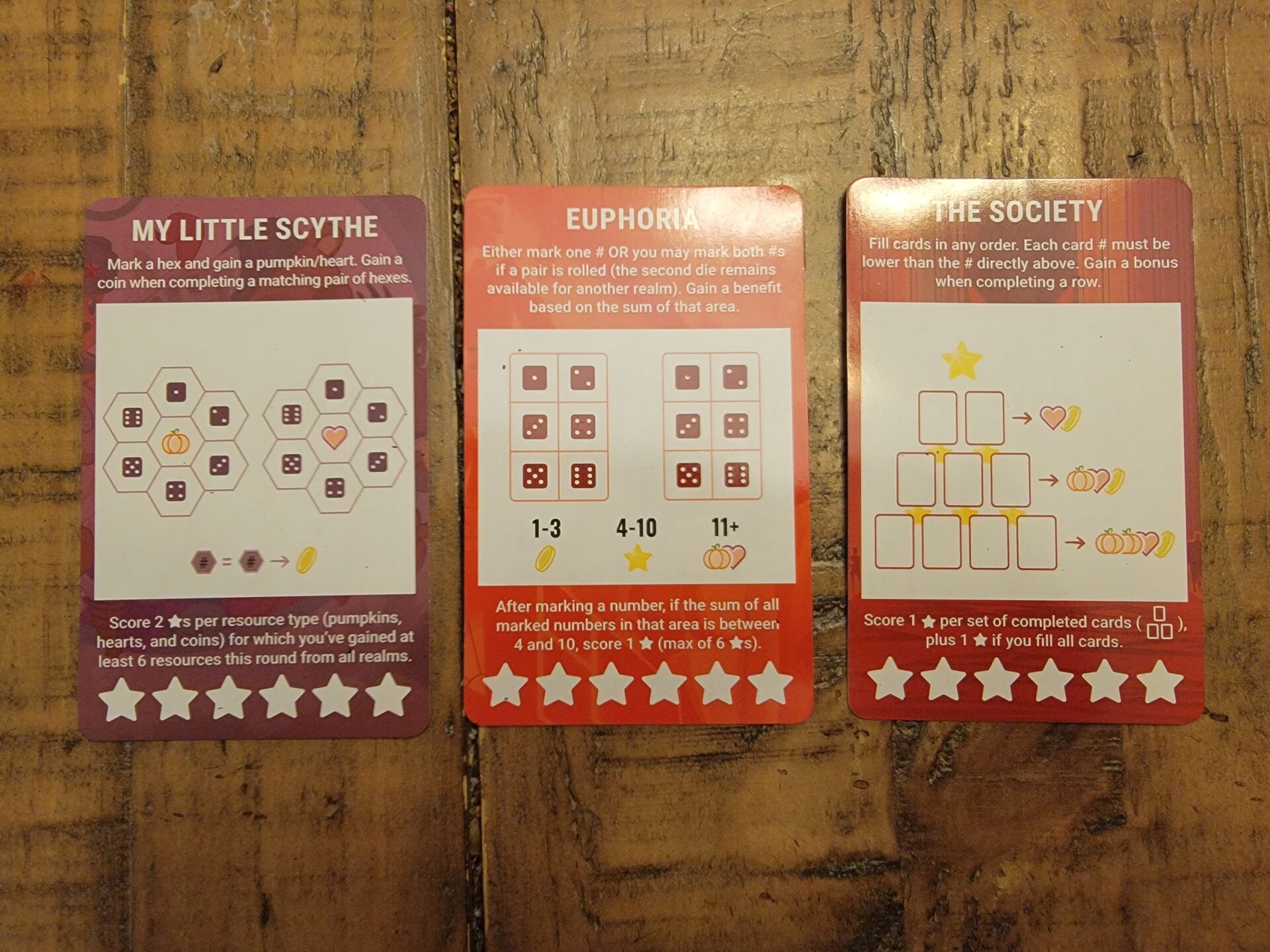
Understanding that the amount of fun one derives from each card is going to be fairly subjective, there are cards that are just less fun for me. Between Two Cities should be more fun as it is one of the only cards that is directly impacted by the scores in the other two realms, but playing it falls flat. The card based around Euphoria is similarly lackluster and feels more like a dumping ground for the numbers that you cannot make work in the more creative realms.
The games go quick as everyone is simultaneously filling in their cards and choosing the best way to use their resources. It’s also nice that you don’t have to have a huge footprint to play it. My wife and I can sit on some comfortable chairs on our porch and play a full game, placing cards on either a side table or an ottoman. This game is going to be awesome when it comes to traveling as you wouldn’t even need the full box especially if you knew how many people would be playing, you could just pack up that specific number of cards, markers, your two dice and you’d be ready to roll.
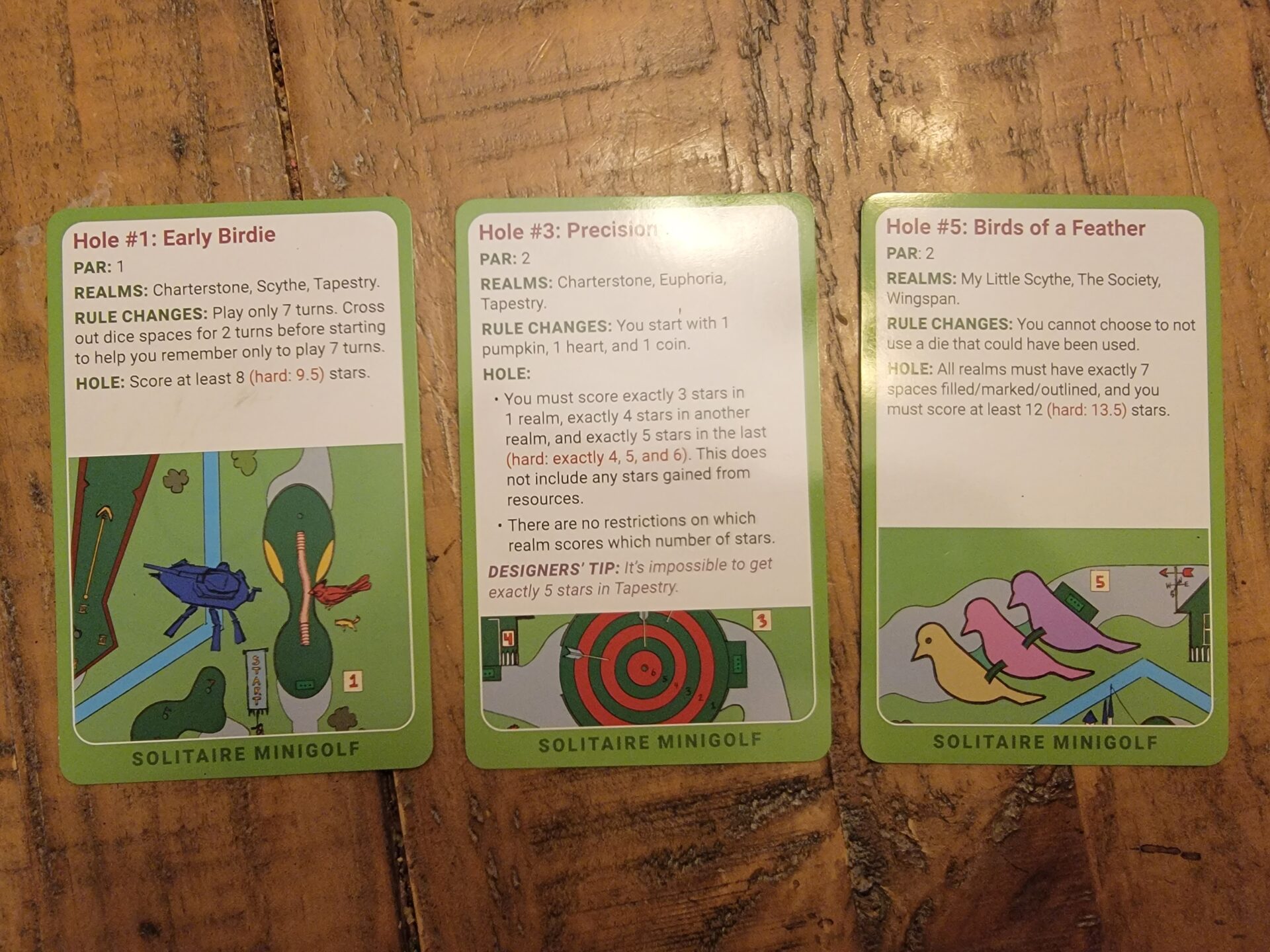
I do want to quickly touch on the solo variant, produced by the Automa Factory. In Rolling Realms, the creators have designed a mini-golf game of sorts where there are 18 “holes” to play through. Each hole has a different set of three realms to use and normally, there is a slight variation to the normal rules. The player is given a number of stars required to “hit” the hole but if this total is not reached by the end of the nine rounds, then he/she “misses” the hole and must try again. Each hole has a par that you are attempting to stay under or equal to, with the full 18 holes being a par 36. I’ve really enjoyed the way this is set up so far but I’m not sure how many times I’ll go through the full 18 holes. It is nice that there is a “hard” difficulty, so I will probably try that but honestly, a few of the holes are more aggravating than fun. Even so, the different rule variations present the player with plenty of options to play solo games without feeling as if they must do the full mini-golf challenge.
Conclusion
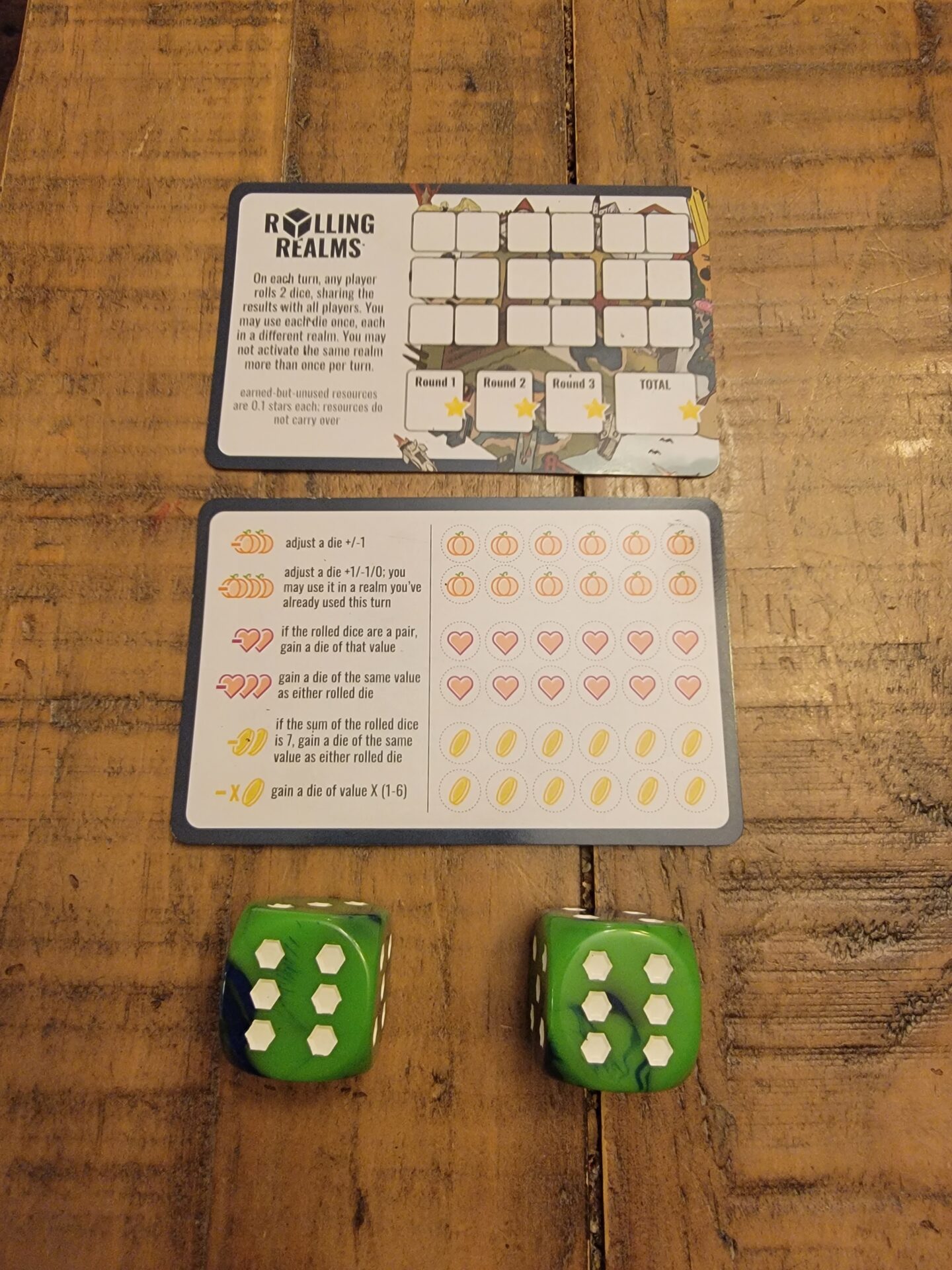
Simply said, Rolling Realms has been more fun than I thought. I guess one would call this a “filler” (though I typically do not play numerous games in one sitting to ever have a filler lol) but with limited time and a busy schedule, it is nice to have a game that you can knock out within 30 minutes and still feel that your brain was engaged. It is also a plus that Stonemaier is putting out additional “promotional” cards representing both Stonemaier games as well as other games in the hobby (Honey Buzz, A Feast for Odin, and Terra Mystica at the time of this writing.) These packs ring in at just a few bucks so it is refreshing to see a method of bringing new content to a game at such a cheap price point.
If you are a Stonemaier fan, I’d highly recommend Rolling Realms, as I think any fan would at least like to see how each of the realms represents the games. You can also check out our YouTube video here where we break down each realm in detail. If you are not a Stonemaier fan but are looking for a light, but fulfilling, game that scales easily at different player counts without adding to the playing time, Rolling Realms might be just what you are looking for.
Rating
Ratings are based on 5 main criteria: rulebook, setup, components, art & graphic design, and gameplay. The first 4 criteria are rated 1 to 5 and the gameplay is rated 1 to 10. These scores culminate in an “overall satisfaction” score that is rated from 1 to 10. If the reviewed game has both a solo and multiplayer mode, I have assigned scores separately to give context to which mode we enjoy more.
Links
As an Amazon Associate I earn from qualifying purchases.
Amazon: Rolling Realms Board Game
